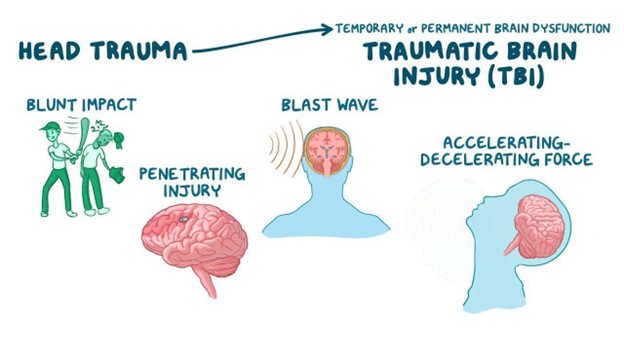A client diagnosed with contact dermatitis is receiving education from the nurse. Which of the following therapies will the nurse recommend to the client?
Phototherapy
Antibiotics
UV light
Avoidance
The Correct Answer is D
Choice A Reason: This is incorrect because phototherapy is not a recommended therapy for contact dermatitis. Phototherapy involves exposing the skin to artificial light sources that emit specific wavelengths of light that can have anti-inflammatory or immunomodulatory effects. Phototherapy can be used for some skin conditions, such as psoriasis or eczema, but not for contact dermatitis.
Choice B Reason: This is incorrect because antibiotics are not a recommended therapy for contact dermatitis. Antibiotics are drugs that kill or inhibit bacteria that cause infections. Contact dermatitis is not an infection, but an allergic or irritant reaction to a substance that comes in contact with the skin. Antibiotics have no effect on contact dermatitis and may cause adverse effects or resistance.
Choice C Reason: This is incorrect because UV light is not a recommended therapy for contact dermatitis. UV light refers to ultraviolet radiation from sunlight or artificial sources that can damage DNA and cause skin cancer or aging. UV light can also worsen contact dermatitis by increasing inflammation and sensitivity to allergens or irritants.
Choice D Reason: This is correct because avoidance is the best therapy for contact dermatitis. Avoidance means identifying and avoiding the substance that causes the skin reaction. This can prevent further exposure and allow the skin to heal. The nurse can help the client by providing education on how to read labels, use protective clothing or gloves, or substitute safer products.
Nursing Test Bank
Naxlex Comprehensive Predictor Exams
Related Questions
Correct Answer is D
Explanation
Choice A Reason: This is incorrect because nystagmus is not a response to stimuli, but a condition that causes involuntary eye movements. Nystagmus can be caused by various factors, such as inner ear disorders, brain lesions, or drug toxicity, but not necessarily by cervical spine injury.
Choice B Reason: This is incorrect because decorticate positioning is a response to stimuli that indicates damage to the cerebral cortex or the corticospinal tract. Decorticate positioning is characterized by flexion of the arms and extension of the legs. It does not indicate cervical spine injury, which affects the spinal cord below the brainstem.
Choice C Reason: This is incorrect because lack of any response to stimuli can indicate various levels of brain damage or coma, but not specifically cervical spine injury. Lack of any response can also be influenced by other factors, such as sedation, hypothermia, or shock.
Choice D Reason: This is correct because decerebrate positioning is a response to stimuli that indicates damage to the brainstem or the upper cervical spine. Decerebrate positioning is characterized by extension and outward rotation of the arms and legs. It indicates a severe and life-threatening injury that can impair vital functions, such as breathing and blood pressure.

Correct Answer is B
Explanation
Choice A reason: This is incorrect because loss of peripheral vision is not a manifestation of cataracts, but of glaucoma. Glaucoma is a condition that causes increased pressure inside the eye and damage to the optic nerve, which can lead to loss of vision in the outer edges of the visual field. The nurse should assess the client's intraocular pressure and visual field test results to rule out glaucoma.
Choice B reason: This is correct because a decreased ability to perceive colors is a manifestation of cataracts. Cataracts are a condition that causes clouding or opacity of the lens, which is the transparent structure behind the pupil that focuses light onto the retina. Cataracts can reduce the clarity and contrast of vision and make colors appear faded or yellowish. The nurse should ask the client about any changes in color perception or brightness of objects.
Choice C reason: This is incorrect because loss of central vision is not a manifestation of cataracts but of macular degeneration. Macular degeneration is a condition that affects the macula, which is the central part of the retina that is responsible for sharp and detailed vision. Macular degeneration can cause blurred or distorted central vision, difficulty reading or recognizing faces, or dark spots in the visual field. The nurse should assess the client's visual acuity and fundoscopic examination results to rule out macular degeneration.
Choice D reason: This is incorrect because seeing bright flashes of light and floaters is not a manifestation of cataracts but of retinal detachment. Retinal detachment is a condition that occurs when the retina, which is the layer of tissue at the back of the eye that converts light into nerve impulses, separates from its underlying support tissue. Retinal detachment can cause sudden flashes of light, floaters, or shadows in the visual field. The nurse should refer the client to an ophthalmologist immediately if retinal detachment is suspected.
Whether you are a student looking to ace your exams or a practicing nurse seeking to enhance your expertise , our nursing education contents will empower you with the confidence and competence to make a difference in the lives of patients and become a respected leader in the healthcare field.
Visit Naxlex, invest in your future and unlock endless possibilities with our unparalleled nursing education contents today
Report Wrong Answer on the Current Question
Do you disagree with the answer? If yes, what is your expected answer? Explain.
Kindly be descriptive with the issue you are facing.
